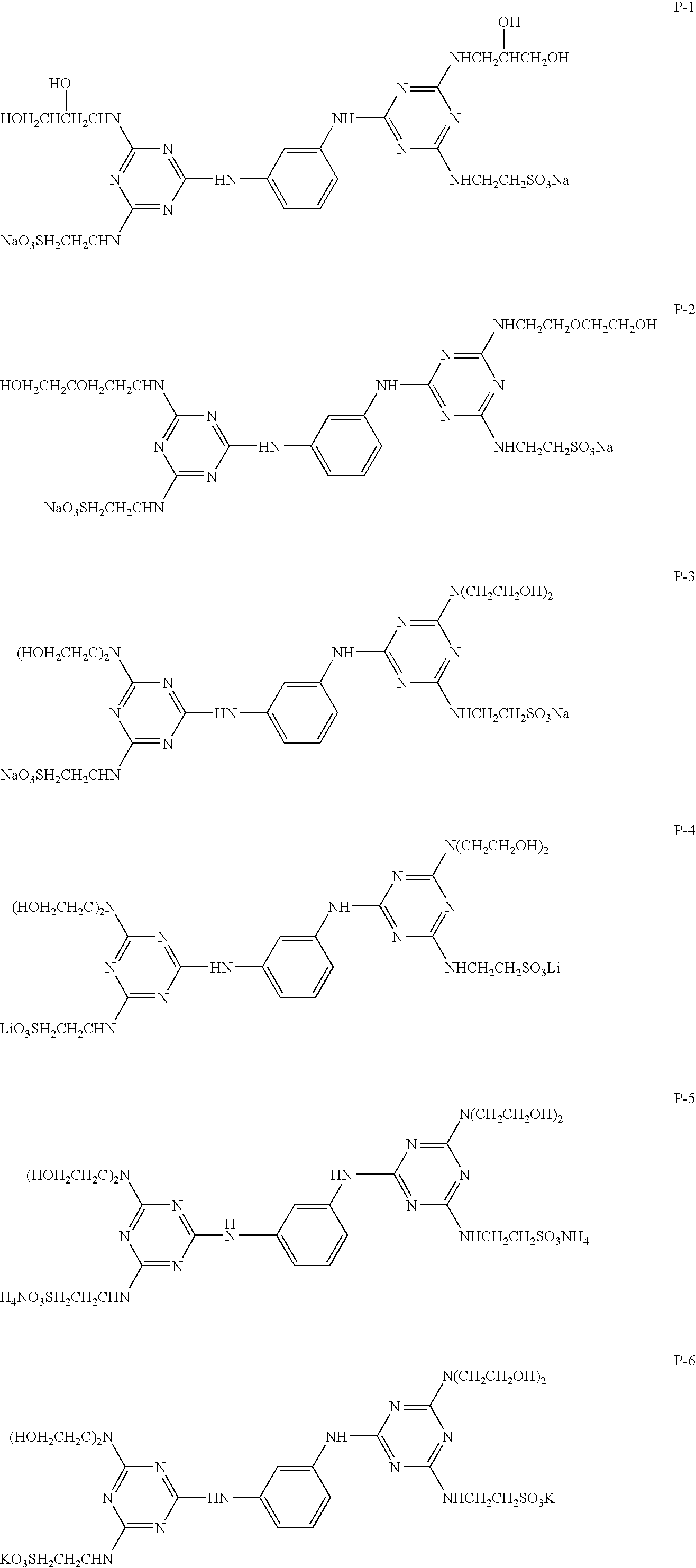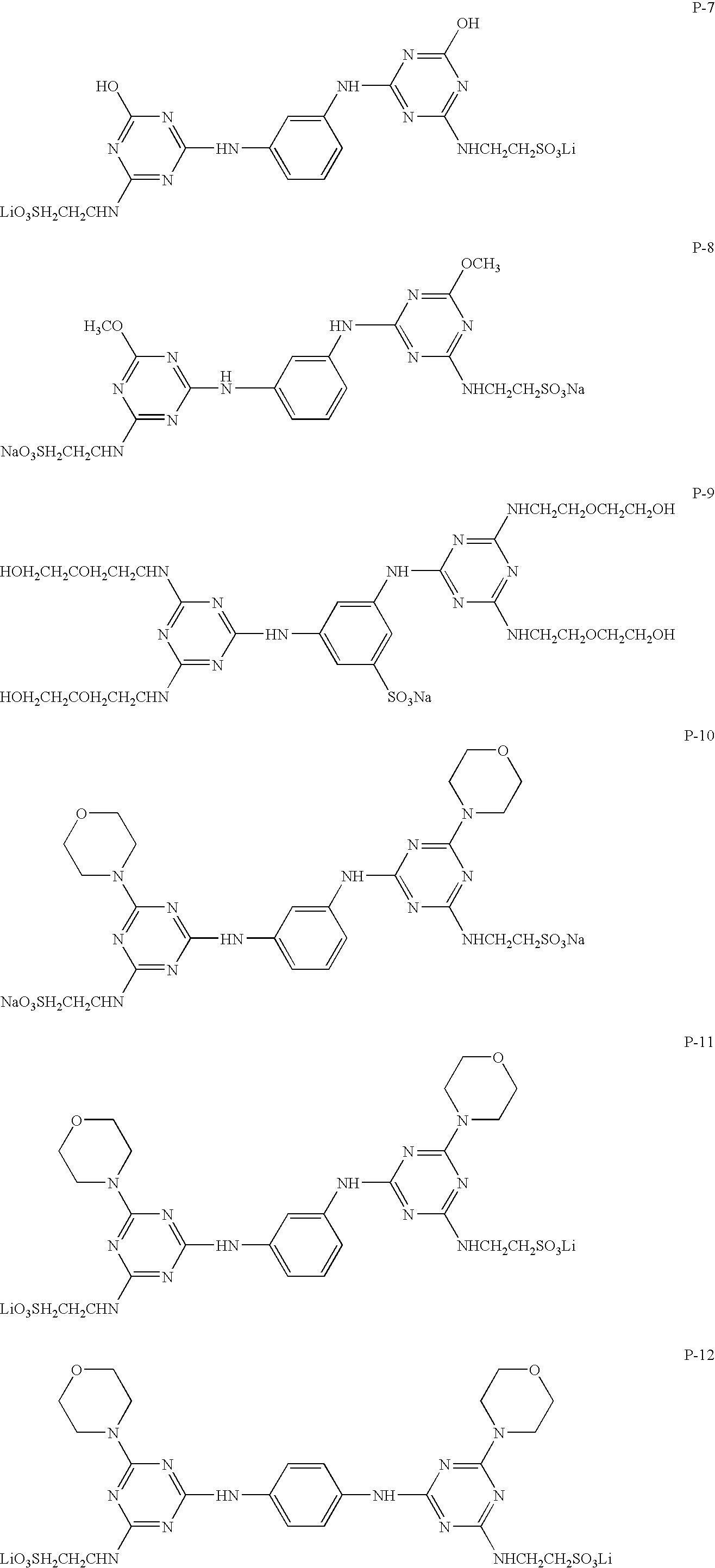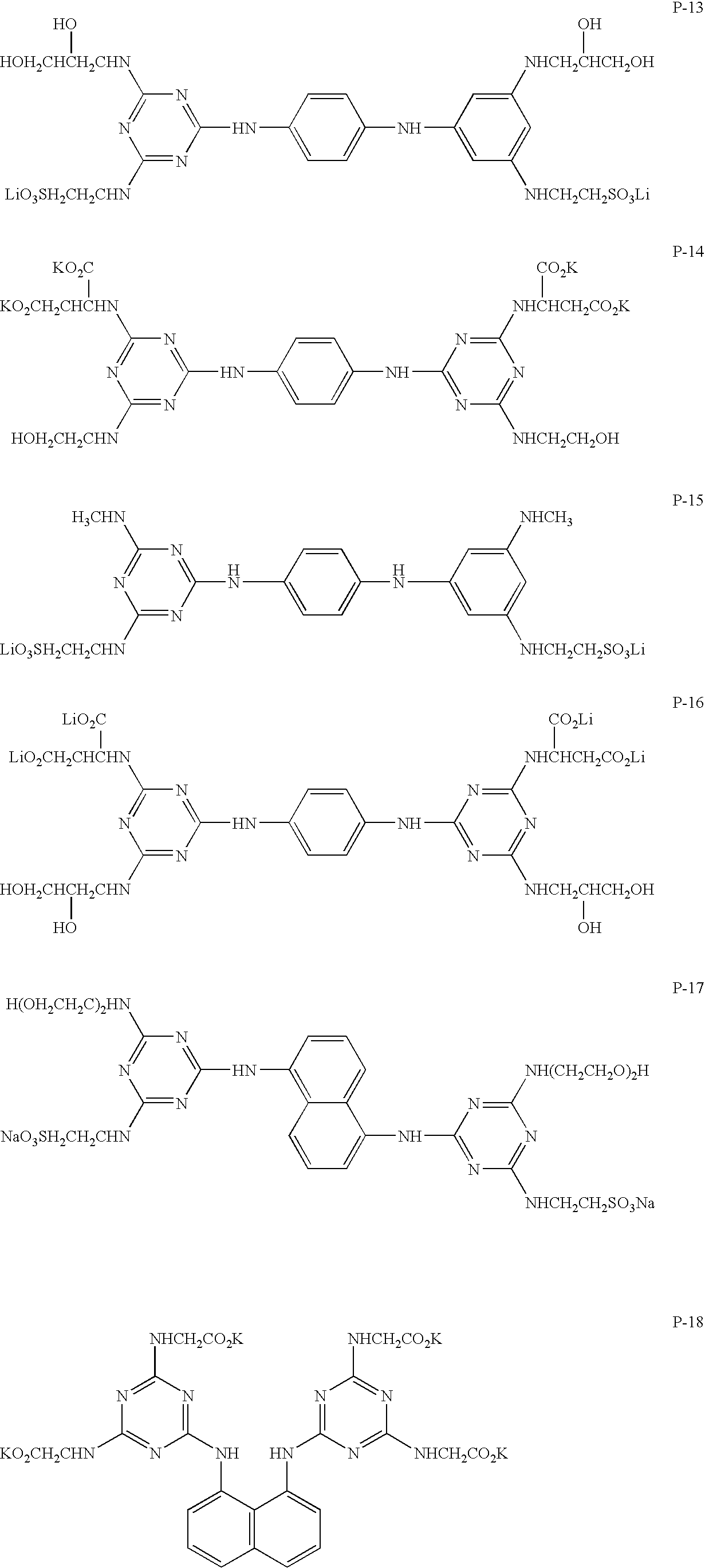Recording medium, ink composition and recording method using the same
- Summary
- Abstract
- Description
- Claims
- Application Information
AI Technical Summary
Benefits of technology
Problems solved by technology
Method used
Image
Examples
examples
[0396] The first invention will now be illustrated in more detail by reference to the following examples, but these examples should not be construed as limiting the scope of the invention. Additionally, all parts and percentages in the examples are by mass unless otherwise indicated.
(Preparation of Support)
[0397] Wood pulp constituted of 100 parts of LBKP was beaten to Canadian freeness of 300 ml by means of a double disk refiner, and admixed with 0.5 parts of epoxidized behenic acid amide, 1.0 parts of anionic polyacrylamide, 0.1 parts of polyamidopolyamine epichlorohydrin and 0.5 parts of cationic polyacrylamide. Herein, the amounts of the additives used were each expressed in terms of the bone dry mass ratio to the pulp. The resulting mixture was made into raw paper having a basis weight of 170 g / m2 by means of a Fourdrinier paper machine.
[0398] In order to adjust the surface size of the raw paper obtained, the raw paper was impregnated with a 4% aqueous polyvinyl alcohol sol...
example 2-1
Preparation of ink sets IS-101 and IS-102
[0418] Ink compositions of four different colors were each prepared as follows: To the ingredients set forth below, ultra-pure water having a resistance of 18 MΩ or higher was added in an amount to make the total volume 1 liter, and stirred for 1 hour while heating at 30-40° C. The resulting solution was passed through a microfilter having an average pore diameter of 0.25 μm under reduced pressure.
[Formula of Cyan Ink Composition](Solid Ingredients)Cyan dye (C-1)60g / lUrea (UR)30g / lBenzotriazole (BTZ)0.08g / lPROXEL XL2 (PXL)3.5g / l(Liquid Ingredients)Triethylene glycol (TEG)110g / lGlycerin (GR)130g / lTriethylene glycol monobutyl ether (TGB)130g / l2-Pyrrolidone (PRD)60g / lTriethanolamine (TEA)7g / lSURFYNOL STG (SW)10g / l[Formula of Magenta Ink Composition](Solid Ingredients)Magenta dye (M-1)23g / lUrea (UR)15g / lPROXEL5g / l(Liquid Ingredients)Diethylene glycol (DEG)100g / lGlycerin (GR)130g / lTriethylene glycol monobutyl ether (TGB)110g / lTriethanolamine (...
example 2-2
[0425] Preparation of Ink Sets IS-201 and IS-202
[0426] Ink compositions of four different colors were each prepared as follows: To the ingredients set forth below, ultra-pure water having a resistance of 18 MΩ or higher was added in an amount to make the total volume 1 liter, and stirred for 1 hour while heating at 30-40° C. The resulting solution was passed through a microfilter having an average pore diameter of 0.25 μm under reduced pressure.
[Formula of Cyan Ink Composition](Solid Ingredients)Cyan dye (C-1)30g / lUrea (UR)40g / lBenzotriazole (BTZ)0.08g / lPROXEL XL2 (PXL)3.5g / l(Liquid Ingredients)Triethylene glycol (TEG)40g / lGlycerin (GR)100g / lTriethylene glycol monobutyl ether (TGB)70g / l1,5-Pentanediol (PTD)50g / lIsopropanol (IPA)20g / lTriethanolamine (TEA)7g / lSURFYNOL STG (SW)10g / l[Formula of Magenta Ink Composition](Solid Ingredients)Magenta dye (M-1)23g / lUrea (UR)15g / lPROXEL5g / l(Liquid Ingredients)Triethylene glycol (TEG)50g / lGlycerin (GR)100g / lTriethylene glycol monobutyl ether ...
PUM
| Property | Measurement | Unit |
|---|---|---|
| Time | aaaaa | aaaaa |
| Acidity | aaaaa | aaaaa |
| Nanoscale particle size | aaaaa | aaaaa |
Abstract
Description
Claims
Application Information
 Login to View More
Login to View More - R&D
- Intellectual Property
- Life Sciences
- Materials
- Tech Scout
- Unparalleled Data Quality
- Higher Quality Content
- 60% Fewer Hallucinations
Browse by: Latest US Patents, China's latest patents, Technical Efficacy Thesaurus, Application Domain, Technology Topic, Popular Technical Reports.
© 2025 PatSnap. All rights reserved.Legal|Privacy policy|Modern Slavery Act Transparency Statement|Sitemap|About US| Contact US: help@patsnap.com



